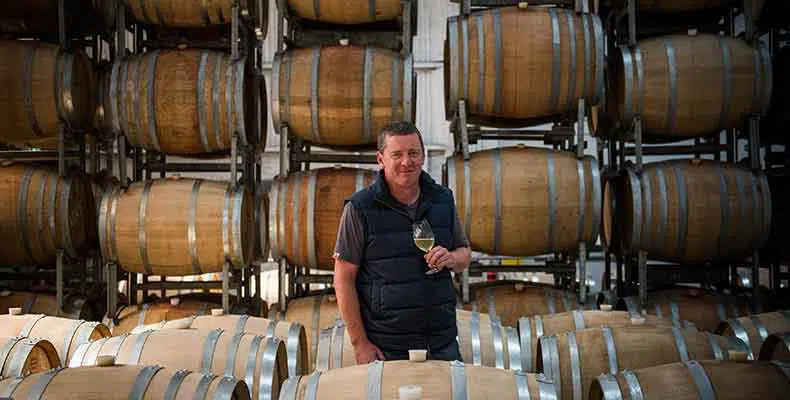
Carbon Neutral Wines
Carbon Neutral Wines

“Ross Hill has taken extensive, well planned measures to reduce greenhouse gas emissions caused by our business, and to minimise our impact on our fragile environment. With the Climate Active certification, our consumers and supply chains can trust our wines to be genuinely carbon neutral.”
– James Robson, Ross Hill Wines
Following a dedicated, six-year-long program, Ross Hill Wines met its main environmental sustainability goal in 2016 of producing carbon neutral wines. As such, Ross Hill Wines was the first wine company to be registered with the Australian Federal Government as a certified carbon neutral winery.
What does this mean? Carbon neutrality is achieved when a company or product’s net greenhouse gas emissions are equal to zero. Attaining Government certification involves more than just buying carbon credits – it’s about reducing a company’s carbon footprint and then offsetting any emissions that can’t be reduced.
Ross Hill Wines is leading the way by not only having the wine business itself certified but by having the actual wine they produce as certified carbon neutral as well. So, when you’re enjoying a Ross Hill wine you are actually doing your bit for the environment. And that’s got to be a great feeling to wash down with a glass of wine!
Ross Hill has long prided itself on a solid environmental policy and has carefully approached all aspects of its wine production process by adopting sustainable principles – from the vineyard to the hands-on winemaking procedures practiced.
Some of these principles include:
- Increasing the existing solar panels from 10kw to a 44kw solar panel system
- Contributing less carbon emissions by minimising transport requirements
- Modifying electric motors to variable speed motors
- Reducing the number of tractor hours by 40%
- Changing all lighting to use less power for the same effect
- Improving insulation in the winery and on surrounding piping & tanks
- Introducing a waste recycling program
- Decreasing water usage by around 50%, thus requiring less pumping power
- Reducing the use of refrigeration in the winemaking process
- Use of low input viticulture and traditional winemaking techniques, including applying indigenous yeast cultures. This encourages biodiversity and minimises the need for artificial chemicals and additives
- Mulching and re-using waste from skins and seeds
- Using natural-based fertilisers
- Reduced irrigation impact by a program of mulching cover crops planted during the rows between autumn and winter
- Sheep grazing between vines after harvest – this reduces tractor hours, weeds and the use of fertilizers
- Rain water catchment from the roof of the winery



